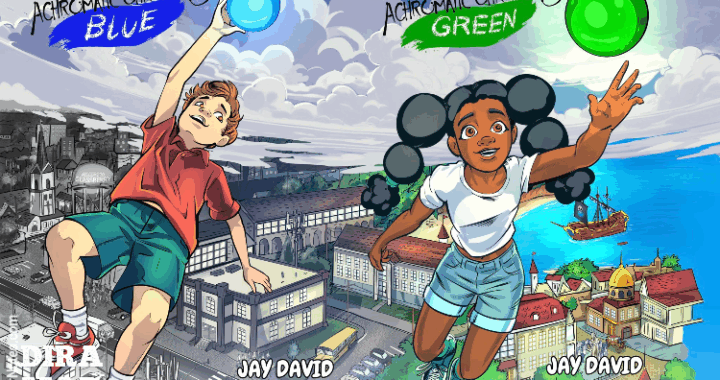
FATMAGÜL VS. FATMAGÜL VS. AMLA
The problem with romanticizing the villains in pop culture and entertainment is that in real life the victims will always lose. Why the story of Amla is better presented than the story of Fatmagül.
It is very rare that I find a remake to be better than the original but when the original is flawed there is a chance for someone to correct those flaws and present a better story. Nowadays people revere original films and series as the better version. But what happens when the story told originally was not great either? Sometimes changes can be for the better when they are done right.
THE FILM (1986)
The film “Fatmagül’ün Suçu Ne?” tells the story of an eye-catching, beautiful girl, Fatmagül, who has no family but her too-naive older brother. Unfortunately, the story starts when Fatmagül, gets raped by 4 men. Three of these men are spoiled rich kids and the other is a local boy, Kerim. The law, stupidly enough, forgives the act of rape if one of the abusers marries the victim.
So, the rich kids get rid of their crime by persuading Kerim to marry Fatmagül. After the two marry, the trio walks free and leaves the town. Kerim gets frustrated because he is the one who’s left with a wife he does not want. He beats Fatmagül, who miscarries a baby because of this.
But Fatmagül, has nowhere to go, no one to trust, and she has no option but to accept and love her husband. This was the story of how two people, desperate in their own ways, bound together and start loving each other, a story built on despair and hopelessness. But is it healthy to be bound together in a hateful relationship or separate? In soap operas, they say that there is a thin line between hate and love and make it seem an easy thing.
Overall, it is a story that is very far from reality and doesn’t have in my opinion a proper message to survivors. And it may be one of the reasons why so many abused women and men stay with their abusers. Maybe there is something I missed in the translation, but I don’t think the story is as great as it was presented to me.
The novel with the same title was published in 2011 in Turkish. The scriptwriter of the film, Vedat Turkali, is the author of the book and the television series was based on his script.
My Rating: 5/10
THE TURKISH SERIES (2010-2012)
Fatmagül’ün Suçu Ne? with 80 episodes is a modernized version of the 1986 movie but based on pure fantasy. In this version written by Ece Yörenç and Melek Gençoğlu, Kerim is portrayed as a passionate lover, a handsome man who is too good to be true. He doesn’t beat her like in the film when she marries her. In fact, he seems to want to take care of her as he feels guilty. Fatmagül is naïve and beautiful with a strong character. She does not love but hates Kerim, refusing to accept him as a husband. As the story progresses, they eventually fall in love which I find problematic.
Everyone seems to accept Kerim as a good Samaritan when he watched her getting raped. In the series unlike in the movie, he didn’t participate in the rape, but he did not stop it. He could have beaten the crap out of his friends or at least tried.
In the series, there are new characters introduced such as Mustafa, Fatmagül’s fiancé, who dumps her immediately after the rape, Fatmagul’s sister-in-law, a serpent of a woman, Ebe Nine; the woman who raised Kerim, who becomes the biggest supporter for Fatmagül. And the villains, the other 3 abusers, and their relatives.
The story turns into a war headed by Fatmagül, and Kerim, versus them. She eventually wins. My issue is the whole setup of the characters since the beginning. Kerim was also at fault. When they were molesting her, he was laughing along. When they started the actual physical abuse, he turned serious meaning that he was aware that what they were doing was wrong, but he did not stop them, and he was able to. His sin is still too grave to be rewarded so easily with freedom. He is a witness to a crime. While he did not participate in committing the crime. He stood by as a willing spectator and did nothing.
He got absolved from a sentence like in the movie version because he is married to Fatmagül, and she did not raise any charges against him. He still needed to do a lot more to compensate. He too should have walked the walk of shame. It gives the false narrative that those who are guilty of a crime, no matter how small, could easily escape punishment without publicly showing any remorse, and unfortunately it happens a lot in real life.
The structure of the whole story was too unrealistic. Maybe the English dubbed version was not the best to watch. I saw clips from the Spanish dubbed version which seems better. Audiences are taken by the charm of the actors seeing how popular the Turkish series was at the time. If you take out the “incident” from the story, it could be a believable love story, especially when Fatmagül gets jealous in episode 78 but it’s far from that.
My Rating: 6/10
THE INDIAN SERIES (2017)
The Indian series Kya Qusoor Hai Amala Ka? with 155 episodes, is almost a carbon copy of the Turkish series Fatmagül’ün Suçu Ne? with some significant changes. Even though it is supposed to be an Indian production at first glance you wouldn’t recognize it as such. I have been watching Indian Serials and Pakistani serials and this looks more like the latter. There is no reference to religion and the clothing of the cast does not resemble what you would usually see.
The difference so far is that the main protagonist passed out during the incident. He doesn’t remember anything. Only his friends know the truth and they lied that he was also guilty. Same as in the Turkish series he marries Amla (Fatmagül). This time Amla is a plain meek-looking girl who lives with her elder brother Raghu and his wife Mandakini referred to as Mando. Amla is engaged to her childhood friend Dev and is waiting to get married.
Abeer did not assault her and was not watching the incident like Kerim in the Turkish version. Here they did a much better job to show that he was in a drowsy state and not able to clearly see his surroundings. But he still lied initially that it was consensual smearing her name while Amla is getting told by her lawyer who is friends with the abusers’ families that she has no worth and has no option but to marry Abeer. Abeer is forced to marry Amla by the powerful family of his rich friends. Amla hates Abeer (Kerim) who falls in love with her after marrying her. When they got married, they had to move to Mumbai along with Amla’s brother’s family, and Karuna, Abeer’s adoptive mother, since everyone got to know what happened to Amla.
Dev (Mustafa) swore vengeance on the rapists including Abeer and is on keeping tabs on Amla. He went to Mumbai looking for them. He got a job working as a driver. Meanwhile, the abusers are starting to experience their well-earned bad karma but it’s still not enough retribution for what they did. Rich kids have always gotten away with almost everything, but luckily karma doesn’t discriminate at all. Sometimes she comes in full force affecting not only the individual but his/hers closest relatives and friends. In this story, she does a great job. As a result, this story has a more satisfying ending than the Turkish version.
Like the Turkish series, the acting is good. I’m wondering why the series is on YouTube? I’m wondering why. It is a Star-Plus series streaming on HotStar and none of the Indian serials streaming on that platform are on YouTube. I’m wondering what’s up with this series in particular. I’m not complaining. It’s just strange. I don’t get Hotstar in my region so YouTube and ZEE5 are where I watch most of the Indian serials. If they could upload more content that would be great.
When searching for the series online you will probably find two titles “Kya Qusoor Hai Amala Ka?” and “Kya Qusoor Hai Amla Ka?”. It seems like the series was initially misspelled and they didn’t bother to correct it during production. Even documents showed on show her name as Amala when it should be Amla. On both Hotstar and Youtube you will find it as “Kya Qusoor Hai Amla Ka?”.
The series had in some of the earlier episodes speeches at the beginning, more like public announcements about respecting women, which are needed based on the sensitive topic of the series and the history of that topic in the country. But why hide the series from the main catalog? Even some of the actors are not credited on IMDb for their roles in the series like Fahmaan Khan (as of the date of this publication). I got a recommendation to see it recently but it doesn’t seem to be a known series which is unfortunate. Overall, I found the story better presented than the Turkish versions.
My Rating: 7/10
THE ISSUES
In the Turkish versions, I can’t reconcile the stories about women (to be specific adult human females), their worth, and healing from the abuse. They seem like fairy tales. Overcoming injustice and lies by having patience and the ability to fight back against the abusers is one thing but having the courage to leave a toxic relationship should also be one of the main points of discussion.
Forgiveness is a very difficult journey, and the Turkish versions make it seem so easy to forgive and forget physical abuse. The road from forgiveness to love may take years if it even happens. It makes many women believe that their abusers could change as Kerim did. It is not realistic. Unfortunately, many victims choose to stay with their abusers.
It also shows the issue of how some men are brought up to view women as objects, and not see physical violation as a problem. And it is most of the time it is the men of a certain class. It is an open secret that the wealthy class has no respect for morals and values. The men I know would have beaten the crap out of their friends or brothers if they would dare to do something like that. Among them are courageous men who would send their brothers and fathers to jail if they were guilty. Most grew up in low- and middle-income-class families.
Fatmagül and Amla did nothing wrong. They weren’t familiar with the guys nor did they want anything to do with them. They were at the wrong place at the wrong time unable to defend themselves. Now, imagine the story if they had a weapon to defend themselves against the attack.
FINAL THOUGHTS
From an adult human female perspective, Abeer’s level of sin is lower than the Kerims in the Turkish versions. He did not do anything, but he still defamed her. So he is no saint or hero in this story. He lied effortlessly about Amla when needed. For that, he did get his fair share of karma. The actual abusers and their family members, who orchestrated all the lies, finally got what they deserve. Now let’s hope that abusers in real life, whether they are men or women, or whatever they identify as, also get their fair share of karma.
Only hoping is not sufficient, we as a society should demand our lawmakers do a better job. There should be proper punishments to make criminals afraid to commit the crime, especially with physical abuse against women and children. It shouldn’t matter to which class you belong, the level of punishment should be the same across the board. Today, it doesn’t really matter whether you are innocent or guilty. The side that has the power, money, and good lawyers, the wealthy side, will win or at least get a significant reduction in the punishments. This phenomenon is the reason why ordinary people get together to crowdfund for legal services when dealing with this side.
The survivors have lifelong internal and external scars. The criminals should get a punishment equivalent to the crime they commit mentally and physically. It is laughable how there are sentences of social work and/or a few months/years of jail time for crimes of physical abuse. The law is a joke and there is no real respect for it but the people can still make a difference with their votes and rallying in the court of public opinion.
A bundle of notes and cyberbullying can be powerful tools abusers can use against their victims but having the courage to stand up tall, often alone in the beginning, with the story, the evidence, and a support system is even more powerful. Stand Tall. Stay Strong!
Interested in more? Let’s keep an eye on Alternative Entertainment!
All images in this publication belong to the original creators and are used as references under fair use.



